
OR
As footpaths shrink, Annapurna trek duration plummets from 28 to 5 days
Published On: September 10, 2023 08:30 PM NPT By: Santosh Pokharel
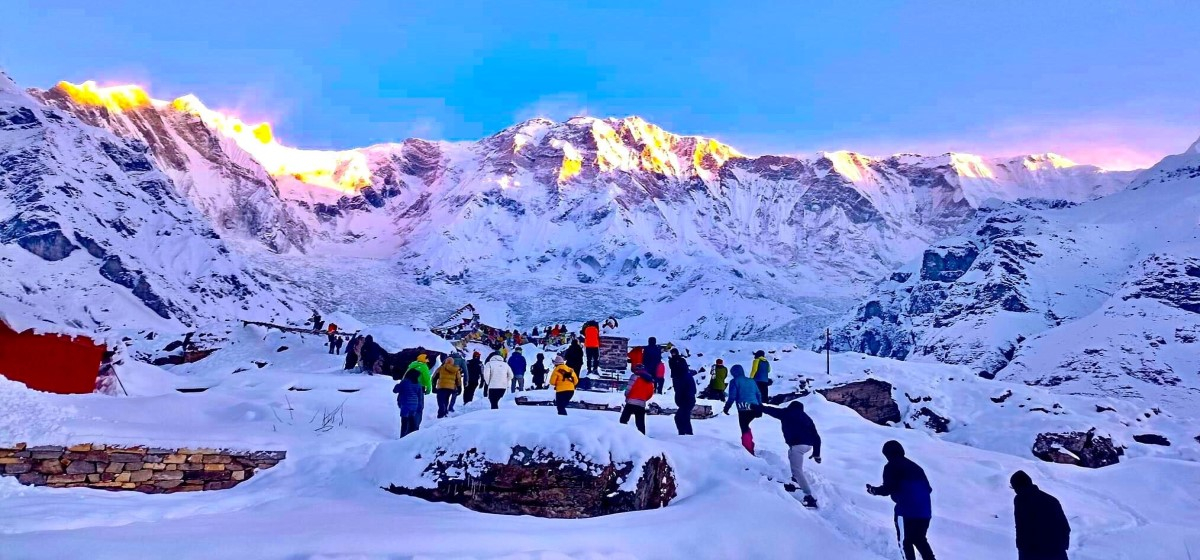
POKHARA, Sept 10: Renowned trekking entrepreneur, Tikaram Sapkota, once offered comprehensive 28-day packages for adventurous tourists embarking on the awe-inspiring Annapurna trek, but things have dramatically changed over the past 15 years. Sapkota himself used to undertake the journey, commencing in Kaski, traversing through Manang, Mustang, and Myagdi, starting from Lamjung during the Annapurna trek. However, that once a month-long expedition has now been streamlined to a mere five days, thanks to the advent of accessible vehicles that have reached even the remote areas of Manang, extending all the way to Khangsar, and even Muktinath in Mustang.
The Annapurna trek has historically been a gem in the tourism sector, previously revered as one of the world's finest hiking trails. Regrettably, the convenience of vehicular transport has substantially curtailed the duration of this once-epic journey. This decline is causing growing concern among tourism entrepreneurs, who are witnessing not only a dwindling duration of the trek but also a noticeable decline in the number of tourists venturing on this expedition.
Tikaram Sapkota elaborated on this change, stating, "The 28-day trekking period has now shrunk to just five days. Adjusting to the altitude poses a challenge when you swiftly ascend by vehicle. In essence, the entire trek now barely spans two days. This reduction in trekking terrain has had a multifaceted impact, negatively affecting tourism, the income of local communities, and the environment itself."
Furthermore, Sapkota pointed out that tourists who were once drawn to the Annapurna trek have been redirected elsewhere due to the diminishing distance brought about by the motorway. Sapkota, who also serves as a former member of the Nepal Tourism Board, emphasized, "Tourism and trekking are inseparable. Most visitors come to Nepal for the unparalleled trekking experiences it offers, and the essence of trekking tourism cannot be preserved without well-preserved footpaths."
Trekking experts assert that the fate of the Annapurna trail mirrors a broader trend of road infrastructure encroaching upon trekking routes, resulting in truncated trekking durations across various trails. According to Sapkota, even the once 10 to 15-day journey to Annapurna Base Camp (ABC) has been compressed to a mere 5 days due to these developments.
"A decade ago, a significant 60 percent of trekkers entering Nepal embarked on journeys through the mesmerizing Annapurna region. However, this statistic has seen a notable decline," he expressed. Such a trend raises substantial concerns for the future of trekking tourism."
Udaya Subedi, another esteemed trekking entrepreneur, meticulously crafted a 26-day trekking package for a group of foreign guests. Yet, Subedi faced considerable challenges in executing this itinerary due to the pervasive reach of motorized vehicles. Crafting a walking-based package proved arduous in a landscape increasingly dominated by motorized transport. Subedi said, "Motorways have infiltrated every corner, making it exceedingly difficult to orchestrate a 26-day trek. We are grappling with the task of ensuring these tourists engage in sufficient walking."
Subedi, recognizing the changing landscape, devised a plan to introduce tourists to alternative trekking routes, as motorization encroached upon traditional ones. Completing the package itinerary within the Annapurna region, now condensed to a mere five days, has compelled them to consider routes such as Mount Mardi. The prevalence of motorized vehicles has not only impacted tourists but has also affected the enthusiasm of guides, leading Subedi to lament, "Foreigners seek trekking adventures, but we have arrived at a juncture where it's challenging to provide them with such experiences."
The Annapurna Trek, once celebrated as a world-renowned trail, traditionally attracted approximately 30,000 foreign trekkers annually. In 2018, this number stood at 29,500, slightly declining to 27,000 in 2017. In 2016, the trek hosted around 22,000 enthusiasts. Some trekkers extended their journeys to visit Tilicho Lake, while others crossed Thorangla Bhanjyang en route to Mustang. The aftermath of the COVID-19 pandemic has seen a sharp decline in trekking numbers.
Moreover, in 2018, as many as 33,683 foreign tourists reached ABC, but this figure dwindled to 28,860 in 2019. According to tourism experts, the deterioration of footpaths due to the proliferation of motorways has not only negatively impacted the tourism sector but has also slashed the income of local communities. As tourists divert from Annapurna, they increasingly turn to the Everest and Khumbu regions for their trekking adventures.
"Wherever there used to be a footpath, motor roads have now been carved right alongside them, leading to the displacement of local businesses that once thrived along these routes," said Sapkota. "Gone are the days when hikers trod upon the old trails. With the convenience of covering vast distances by car, even the traders situated along the former footpaths have found themselves uprooted."
Sapkota further explained that the introduction of motor roads has also shortened the duration of tourists' stays, erasing the existence of the once-charming hiking trails. "Motor vehicles now traverse the very footpaths where hikers once trod, resulting in the deterioration of staircases and suspension bridges," he lamented. "To safeguard tourism, tourists must be provided with alternatives. Preserving the old footpaths by offering alternatives to motorways would have been a boon. Unfortunately, it seems like destruction has become the norm."
He emphasized that despite trekking being Nepal's original tourism product, little concern is being shown for its preservation. Sapkota clarified, "We are not against building highways; we merely request that alternatives be provided without obliterating the footpaths."
Gopi Bhattarai, former president of the Pokhara Tourism Council, echoed the apprehensions regarding the declining state of tourism as hiking trails vanish. He pointed out, "Once upon a time, the majority of tourists arriving in Nepal sought trekking experiences. Now, the destruction of footpaths has contributed to the decline in tourism."
The transformation of what were once treacherous trekking routes into vehicle-friendly thoroughfares is undeniable. Bhattarai underlined the significance of understanding that the decline of trekking equates to the decline of tourism. He remarked, "Until we recognize that the loss of trekking equates to the loss of tourism, this situation will persist. Furthermore, as trekking dwindles, investments in the tourism sector weaken."
Dharmaraj Panthi, the president of the Trekking Agencies Association of Nepal (TAAN), Gandaki, the overarching organization representing trekking traders, expressed his concern over the vanishing trails. He emphasized that this situation has arisen due to the prioritization of infrastructure as the sole path to prosperity. "Infrastructure is often perceived as the cornerstone of progress. This is why the highway construction surged overnight without considering the implications on tourism," Panthi noted. "Long-distance trekking is now becoming a relic of the past, and the quest for new routes continues, although these new paths are often shorter than their predecessors, given the widespread accessibility afforded by motor vehicles."
You May Like This
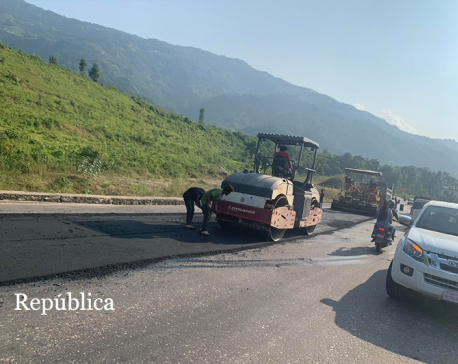
62 percent construction of Galchhi-Mailung road completed
RASUWA, Oct 16: The road connecting Galchhi-Mailung-Syaphrubesi-Rasuwagadhi has witnessed 62 percent work progress in the first segment of its enhancement project. Read More...

Additional fee levied on petrol, diesel for road maintenance
KATHMANDU, May 30: The government has decided to levy an additional Re 1 per liter fee on diesel and petrol... Read More...

Snowfall disrupts Solukhumbu-Kathmandu road
SOLUKHUMBU, Jan 24: Snowfall in mountainous Solukhumbu district on Wednesday has taken its toll. Solukhumbu-Kathmandu road has been disrupted cutting... Read More...





Just In
- CIB continues investigation into illegal driving license issuance case
- Hearing on 'murder' case against Agni Sapkota scheduled in SC after 17 years
- Ridi-Tamghas road to undergo a month-long closure from today
- Political party leaders express commitment to ensure consensus to promote investment in the country
- Ilam by-election update: UML's Nembang continues to lead in vote count
- Demystifying labeled Feminism
- Japanese Foreign Minister to visit Nepal next week
- Bajhang by-election update: NC candidate ahead by 249 votes








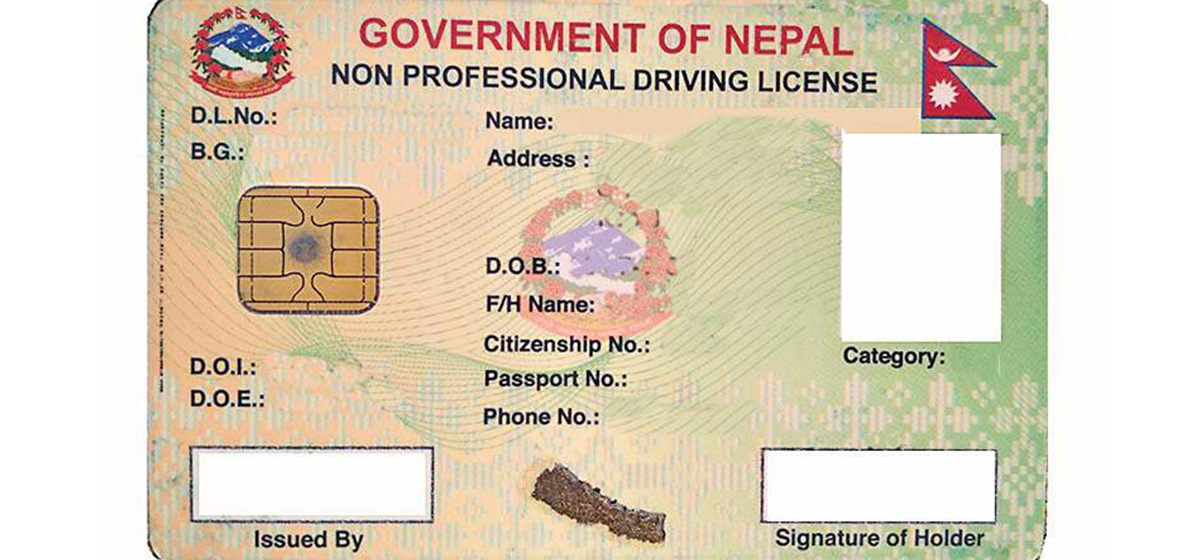
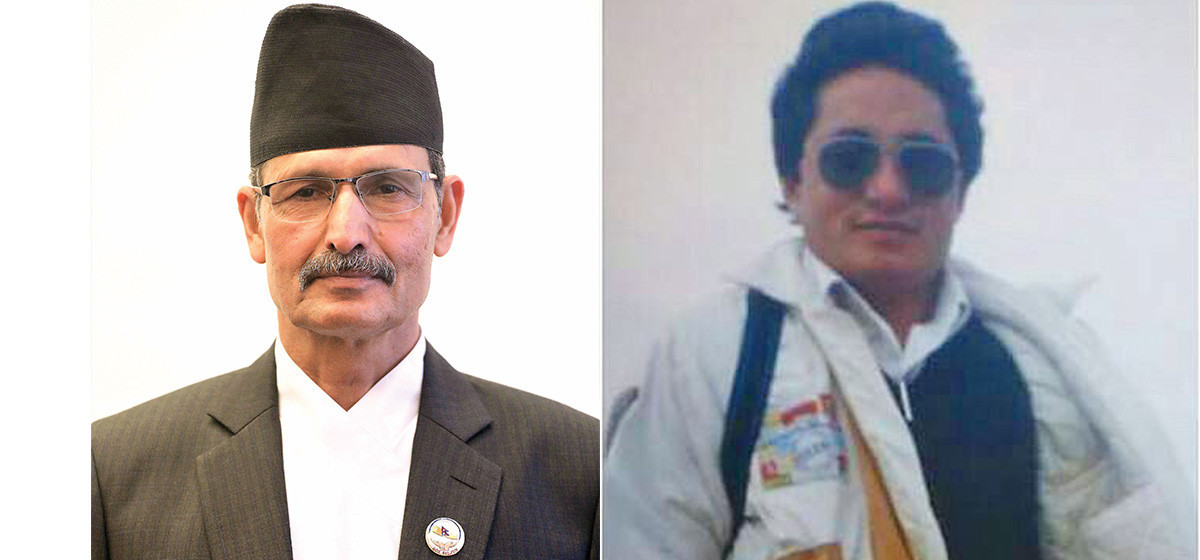
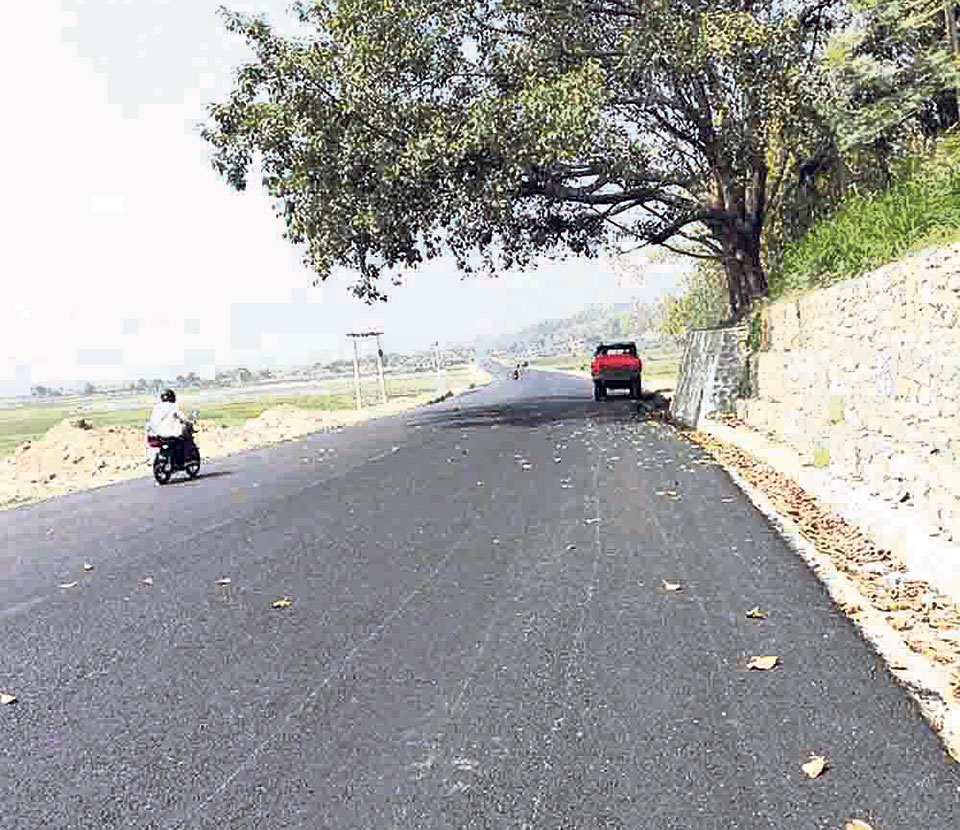

Leave A Comment